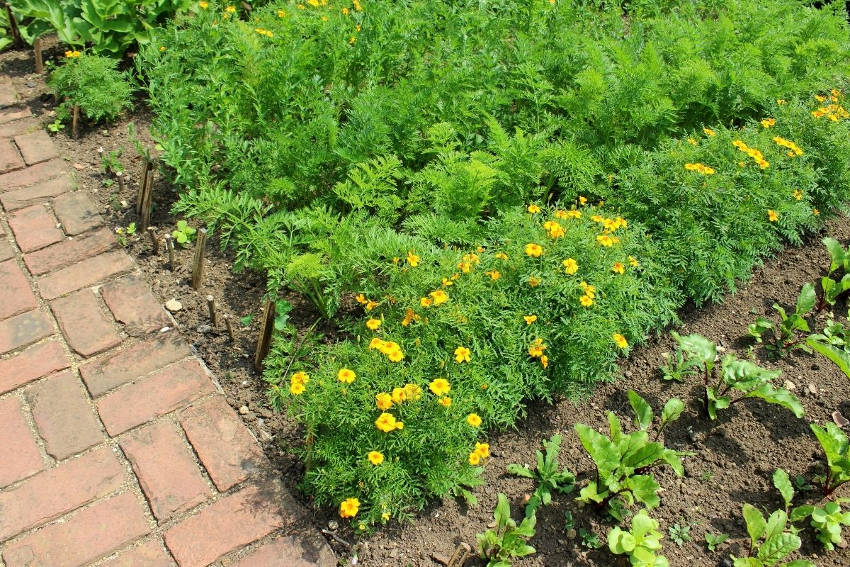Trap Crops: A Natural Solution for Pest Control on Your Homestead
As a homesteader, one of the biggest challenges you face is dealing with pests that can wreak havoc on your crops. While chemical pesticides may seem like an easy solution, they often come with harmful side effects for the environment and your health. Luckily, there is a natural and sustainable alternative – trap crops.
What are Trap Crops?
Trap crops, also known as sacrificial or decoy crops, are plants that attract pests away from your main crop. By strategically planting these trap crops throughout your garden or farm, you can minimize damage to your valuable produce without resorting to toxic chemicals.
How Do Trap Crops Work?
The concept behind trap cropping is simple yet effective. Certain plant species naturally emit volatile compounds that act as attractants for specific pests. By planting these attractive species near susceptible crops, you lure the pests away from the desired plants and towards the decoy ones.
Once the pests focus their attention on the trap crop, they can be easily controlled through various methods such as manual removal or targeted pesticide application if necessary. This not only protects your main crop but also reduces pest populations in general.
Common Types of Trap Crops
There are numerous types of trap crops available depending on the type of pest you wish to control:
1. Nasturtiums: These vibrant flowers attract aphids away from vegetables such as tomatoes and peppers.
2. Sunflowers: Aphids and thrips are attracted to sunflowers instead of neighboring lettuce or beans.
3. Mustard Greens: Planting mustard greens alongside cabbage-family vegetables draws flea beetles away from them.
4. Marigolds: These colorful flowers repel nematodes when planted near tomatoes or other susceptible plants.
5. Radishes: Flea beetles prefer radishes over arugula or spinach, making them excellent decoys in vegetable gardens.
6. Buckwheat: This fast-growing cover crop attracts aphids and leafhoppers, protecting other garden plants.
Benefits of Trap Crops
1. Reduced Pest Pressure: By diverting pests to trap crops, you minimize damage to your main crops and help maintain a healthy ecosystem on your homestead.
2. Environmentally Friendly: Unlike chemical pesticides that harm beneficial insects and contaminate the soil, trap cropping relies on natural processes without causing any negative impact on the environment.
3. Cost-Effective: Investing in trap crops is often more cost-effective than purchasing chemical pesticides or resorting to other pest control methods.
4. Increased Biodiversity: Planting a variety of different species as trap crops encourages biodiversity by attracting beneficial insects like ladybugs, lacewings, and parasitic wasps that prey on common pests.
Tips for Successful Trap Cropping
While trap cropping can be an effective technique for pest control, there are some important considerations to keep in mind:
1. Choose the Right Species: Select trap crop species based on the pests prevalent in your area and those known to target your desired plants.
2. Timing is Key: Plant trap crops early enough so they reach their attractive stage before the main crop becomes vulnerable to pests.
3. Monitor Regularly: Keep a close eye on both the trap crop and main crop for signs of pest activity. If necessary, take action promptly using appropriate organic pest control methods.
4. Rotate Your Strategy: Pests can adapt over time, so it’s essential to rotate your choice of decoy plants each season or even within a season if multiple generations of pests are present.
5. Companion Planting: Combine trap cropping with companion planting techniques where certain plants naturally repel specific pests or attract beneficial insects that aid in pest control further enhancing its effectiveness.
In conclusion, incorporating trap crops into your homesteading practices offers an eco-friendly alternative for managing pesky insect populations without relying on harmful chemicals. By understanding the pests you’re dealing with and strategically planting decoy crops, you can protect your valuable produce while fostering a healthy and balanced ecosystem on your property. So why not give trap cropping a try and enjoy the benefits of sustainable pest control?


Leave a comment